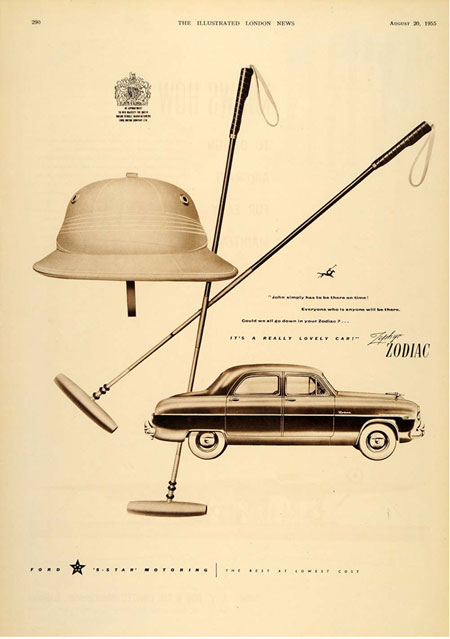
A vintage 1950s ad that shows how closely the post-war polo helmet resembled the military sun helmet
One interesting connection between the military and sun helmet has been discovered. This isn’t exactly ground breaking, but research has shown that the connection runs far deeper than previously understood.
This goes back to the Victorian Era when polo was played by many British Army Regiments. Numerous books note that polo was a popular sport with British officers, and sun/pith helmets were primarily worn.
In fact many of the same companies that provided military headdress also made polo helmets, including Herbert Johnson, a hatter that still makes dress caps and berets. During the 1890s the company made sun helmets and polo caps, and was just one of several companies that introduced a polo pattern sun helmet. The connection to polo and sun helmets is highlighted in the book The Evolution of Polo by Horace A. Laffaye, McFarland (2009, Pages 218-219):
Following the implementation of an order by Gen. Sir Frederick Roberts, commander-in-chief, that all officers must wear a helmet during play, the pith helmet became a favorite of polo players in India. They provided shade to the eyes, and the thick brim extended the entire circumference of the helmet. The polo helmet or cap was a derivation of the old hunting cap; its design was credited to Gerald Hardy, a player of repute. The protection was provided by layers of pith and cork, with holes provided for ventilation.
The polo cap style became prevalent in America, while the pith helmet remained the staple of British players until after World War II.
Peter Suciu

From 1934 the “polo pattern” helmet started replacing the Wolesely pattern in the South African Forces. The SA Air Force had been the first to get them as they were easier to accomodate in an aircraft than the Wolesley version. By WWII it had become the distinctive helmet of SA troops, although a few “old timers” continued to wear their previously issed Wolesleys. Canadian made versions of the polo helmet were also worn by some SA troops.